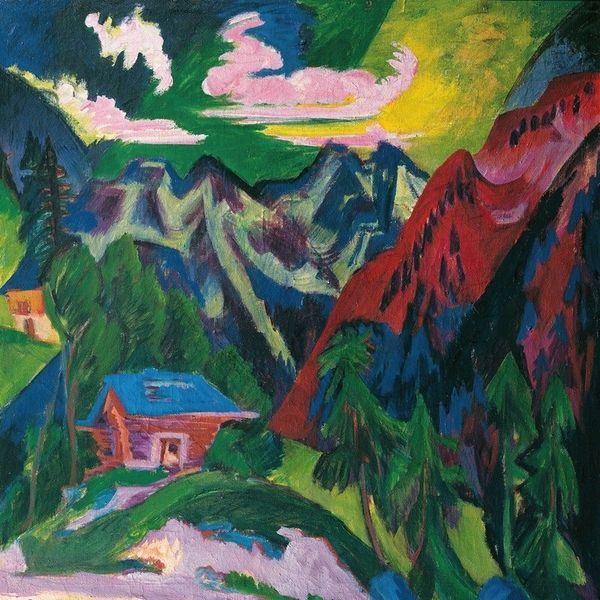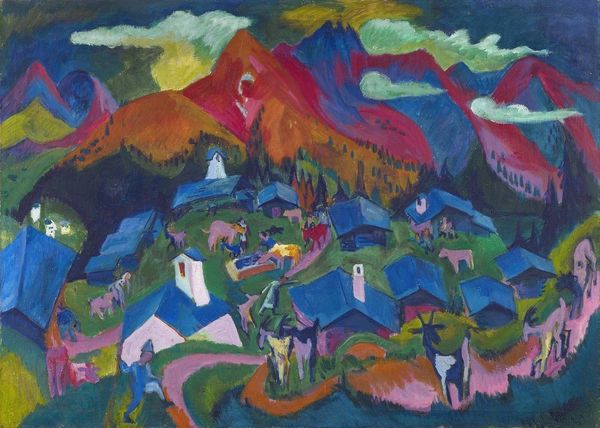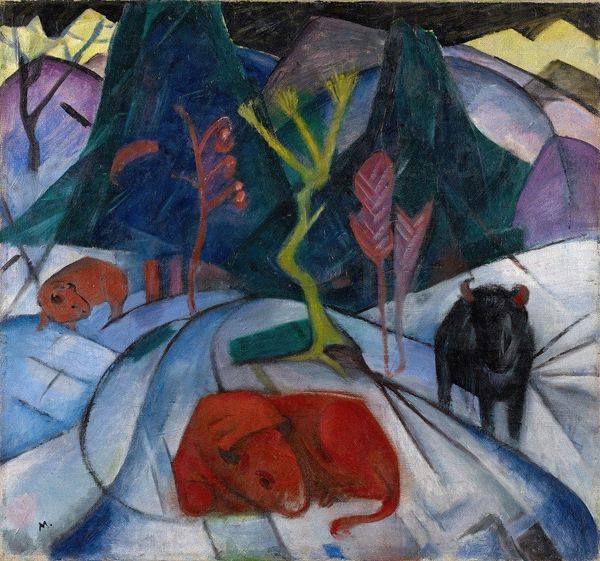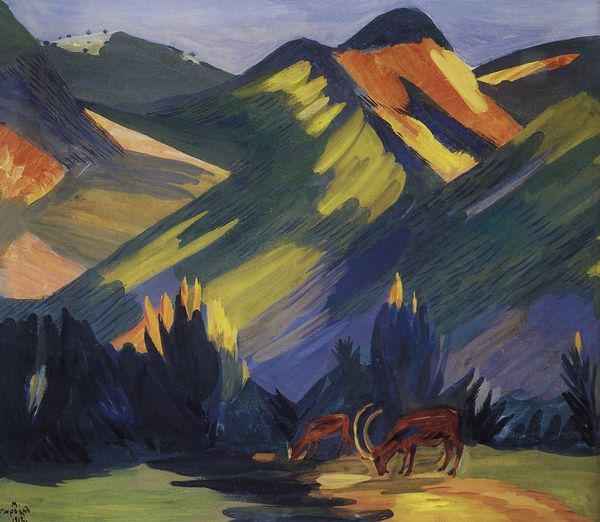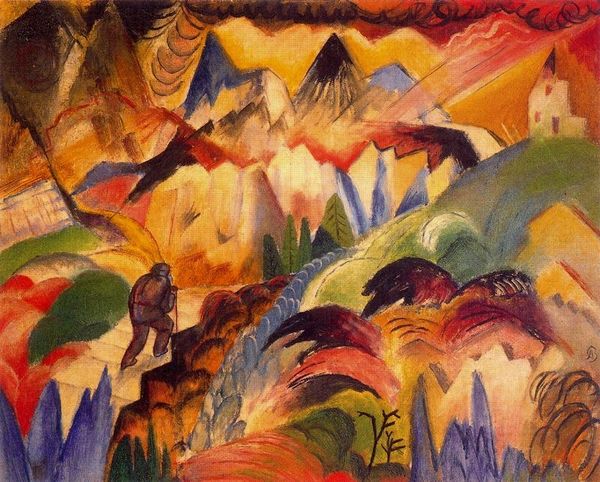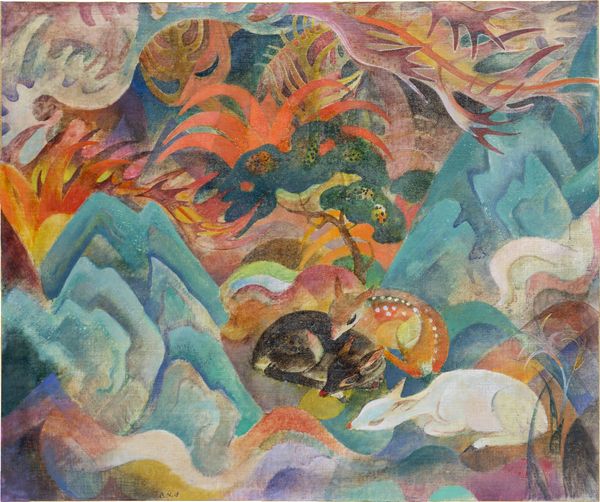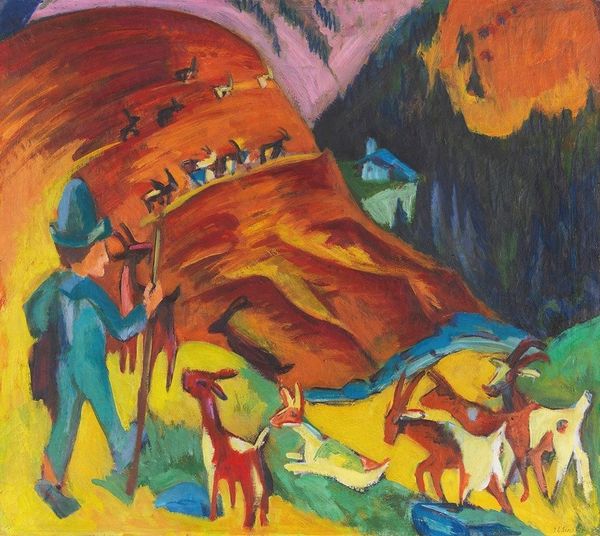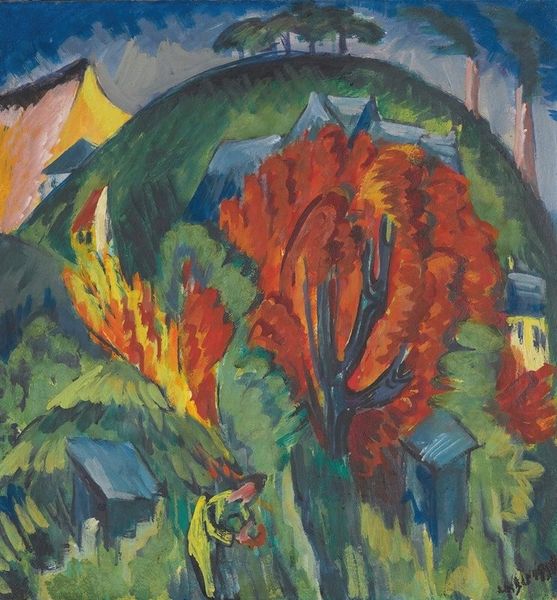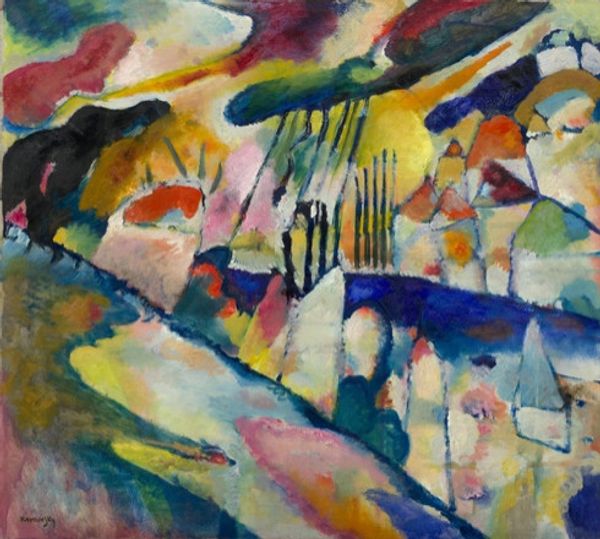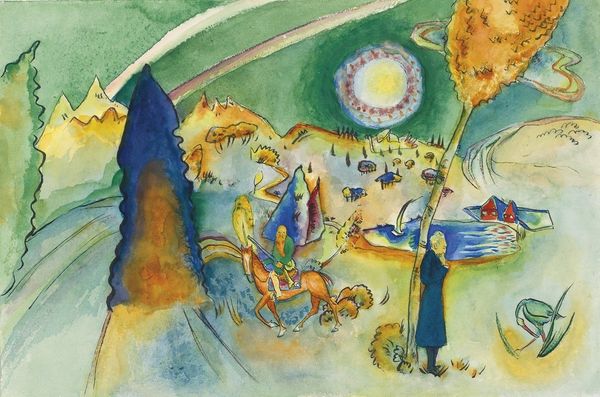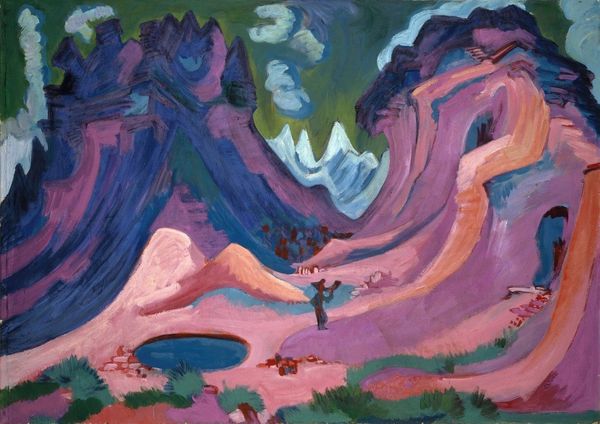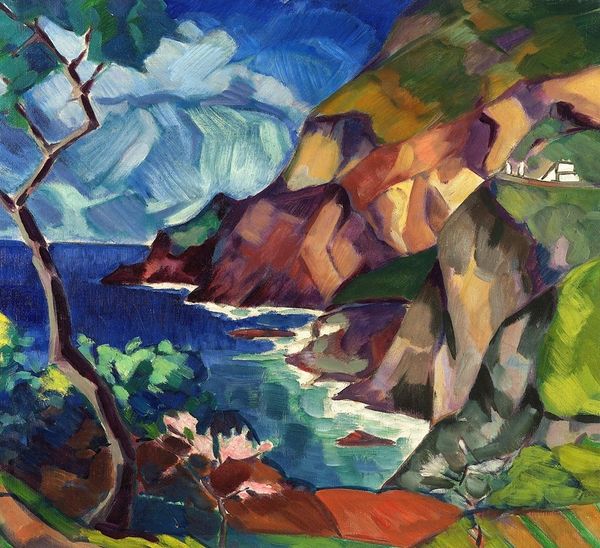
Copyright: Public Domain: Artvee
Curator: This is Ernst Ludwig Kirchner's "Galtviehweide," painted around 1918-1919. Editor: It’s strangely pastoral, in that jarring Expressionist way. The color palette is almost aggressive – that mauve against the bright greens and yellows. Curator: The jarring quality speaks to Kirchner’s anxieties and alienation post-World War I. He struggled with trauma, and his later work, including this painting, is interpreted through that lens. The idealized landscape contrasts sharply with the lived realities of the era, especially the psychological landscape. Editor: Interesting. For me, it's about the visible brushstrokes, how the oil paint itself becomes a textured terrain, mimicking the roughness of the mountain landscape. He is practically sculpting with the medium, layering it on thick to build these forms. It emphasizes the sheer physical act of painting. Curator: Indeed, and within the context of his earlier, more urban Expressionist work, this move to the mountains, to this more “primitive” subject matter, signifies a searching for authenticity. Consider how artists across Europe at the time were engaging with notions of the primitive as a way to challenge modernity. This is complicated by the violence inherent in such idealizations. Editor: I am more struck by the seeming simplification of the subject. The stylized cows, the crude figures of the herders. What looks like a quick application speaks volumes about the relationship to labor itself and to craft. It’s like Kirchner is wrestling with the representation of pastoral work. Curator: Right, we could interpret this work through a post-colonial lens, examining Kirchner's gaze and the representation of rural life through the eyes of an urban, traumatized artist grappling with national identity. Editor: It is more about Kirchner's visible hand, making clear to any observer the human process required to build an image, build a space that in reality is a social one based on material labor. Curator: That approach truly expands how we engage with Expressionist landscapes, moving beyond biography into the wider sociopolitical field of artistic creation. Editor: Absolutely. By thinking about process and material, you're never really leaving people, labor, or culture out of the landscape.
Comments
No comments
Be the first to comment and join the conversation on the ultimate creative platform.
